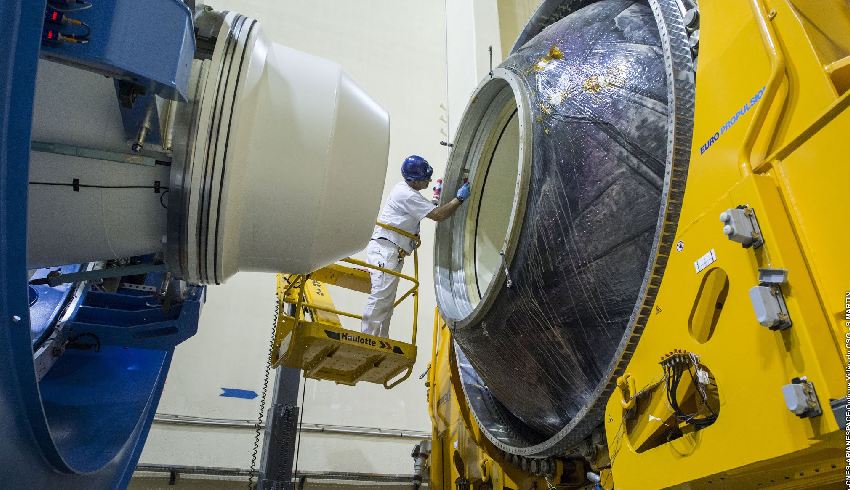
Fully loaded with 142 tonnes of fuel, the 13.5 metre long and 3.4 metre diameter motor was ignited for a final simulation of liftoff and the first phase of flight. During a burn time of 135 seconds, the P120C delivered a maximum thrust of about 4,650 kN.
No anomalies were detected during the test-burn, according to initial recorded data, and the performance met expectations. A full analysis of these test results will confirm readiness of this motor for Vega-C’s debut launch.
The large motor case made of carbon composite was built in one piece. Advanced manufacturing techniques have been incorporated in horizontal robotic integration of the nozzle, and efficient production has driven down costs in a competitive launchers market.
This hot firing follows the test of the P120C development model in July last year. The second qualification model, configured for Ariane 6, will be tested later this year.
Ariane 6 will also use P120C motors as strap-on boosters, either two or four according to the configuration. Building a common motor for Europe’s next-generation launch vehicles has benefitted development goals and economies of scale, supporting ESA’s goal to maintain independent access to space for Europe. ESA, France’s CNES space agency, and Europropulsion, under contract to Avio and ArianeGroup, collaborated on this test.
The successful static test firing comes following a similar successful test held by the ESA in mid-2018. The hot firing of the P120C in July 2018 marked an important milestone in the development schedule of Europe’s new-generation launchers, designed to boost autonomy in the space arena and maintain Europe’s global competitiveness.
The P120C will replace the current P80 as the first stage motor of Vega-C. Two or four P120Cs will be strapped onto Ariane 6 as boosters for liftoff.
Receive the latest developments and updates on Australia’s space industry direct to your inbox. Subscribe today to Space Connect here.









